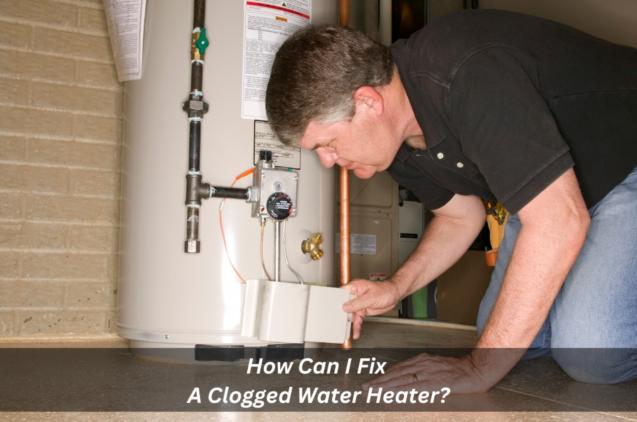
What Water Heater Repairs Can You Do On Your Own?
By Apex Gas Heater Services|April 06, 2023
Having a functional heating element like hot water heater is essential for anyone looking to enjoy hot showers or baths. Water heaters are also important in ensuring your safety as there are many risks associated with malfunctioning ones, such as the risk of carbon monoxide poisoning.
Knowing what kind of service and repair you can do on your own is key to keeping costs down and preventing any potential safety hazards. Whether you have a Rinnai gas heater or an electric water heater tank system, there are several steps you can take to ensure your water heater runs efficiently and safely.
From checking the pilot light and thermocouple to replacing pressure relief valves, this article will discuss the various DIY water heater repairs that you can do yourself. We will also tackle how to search for a professional “Rinnai gas heater service near me” if you need one.
Some of the common issues associated with Rinnai gas heaters include faulty upper thermostats, cold water, circuit breakers tripping, and carbon monoxide leakage. These can be solved by ensuring that your heater is serviced regularly and by replacing or repairing faulty parts when needed.
If you feel uncomfortable attempting DIY repairs on your own, it is best to get a service technician to do it for you as this ensures that the job is done correctly and safely. Additionally, make sure to purchase spare parts from reputable suppliers to ensure quality repair works.
If you find that either of these components has an issue, it is best to get a service technician to repair it for you as this ensures that it is done correctly and safely. Additionally, make sure to switch off the power supply before attempting any repairs.
Once all repairs are complete, perform a safety check by switching on the power supply and checking if there are any signs of carbon monoxide leaks or other hazards. Following these steps will help you keep your gas heater running smoothly while avoiding any safety risks associated with DIY gas heater repairs.
Attach a garden hose to the drain valve located near the bottom of the tank and open it up, allowing for all of the stored water to be flushed out. Once complete, close off both valves, turn on the cold water supply, and switch on the power again. When finished, check for any leaks or other issues that may have occurred during this process before restarting your heater.
Remove the existing rod from the top of the tank by loosening the screws that hold it in place. Install a new one in its place and tighten down all screws before switching on both power and water supplies to ensure everything is properly connected.
If you notice any issues with your valve, shut off the power and water supply before removing the valve and replacing it with a new one. Installing a new valve ensures proper operation of your water heater and can help prevent serious injury or damage caused by excessive pressure inside the tank.
In addition, if you are unsure of how to properly diagnose and repair or solve the problem yourself, then it is always wise to contact a licenced service technician who can safely complete the job. Finally, always remember that safety should come first when working with any type of appliance and never attempt to repair something without proper knowledge or experience.
Knowing what kind of service and repair you can do on your own is key to keeping costs down and preventing any potential safety hazards. Whether you have a Rinnai gas heater or an electric water heater tank system, there are several steps you can take to ensure your water heater runs efficiently and safely.
From checking the pilot light and thermocouple to replacing pressure relief valves, this article will discuss the various DIY water heater repairs that you can do yourself. We will also tackle how to search for a professional “Rinnai gas heater service near me” if you need one.
- Basic knowledge of Rinnai gas heaters and the common issues they face
Some of the common issues associated with Rinnai gas heaters include faulty upper thermostats, cold water, circuit breakers tripping, and carbon monoxide leakage. These can be solved by ensuring that your heater is serviced regularly and by replacing or repairing faulty parts when needed.
If you feel uncomfortable attempting DIY repairs on your own, it is best to get a service technician to do it for you as this ensures that the job is done correctly and safely. Additionally, make sure to purchase spare parts from reputable suppliers to ensure quality repair works.
- Check your pilot light and thermocouple for any issues
If you find that either of these components has an issue, it is best to get a service technician to repair it for you as this ensures that it is done correctly and safely. Additionally, make sure to switch off the power supply before attempting any repairs.
Once all repairs are complete, perform a safety check by switching on the power supply and checking if there are any signs of carbon monoxide leaks or other hazards. Following these steps will help you keep your gas heater running smoothly while avoiding any safety risks associated with DIY gas heater repairs.
- Flush your water heater tank for improved efficiency
Attach a garden hose to the drain valve located near the bottom of the tank and open it up, allowing for all of the stored water to be flushed out. Once complete, close off both valves, turn on the cold water supply, and switch on the power again. When finished, check for any leaks or other issues that may have occurred during this process before restarting your heater.
- Replace anode rods to prevent corrosion and improve the lifespan
Remove the existing rod from the top of the tank by loosening the screws that hold it in place. Install a new one in its place and tighten down all screws before switching on both power and water supplies to ensure everything is properly connected.
- Check and replace pressure relief valves when necessary
If you notice any issues with your valve, shut off the power and water supply before removing the valve and replacing it with a new one. Installing a new valve ensures proper operation of your water heater and can help prevent serious injury or damage caused by excessive pressure inside the tank.
- When to call professional water heater experts
In addition, if you are unsure of how to properly diagnose and repair or solve the problem yourself, then it is always wise to contact a licenced service technician who can safely complete the job. Finally, always remember that safety should come first when working with any type of appliance and never attempt to repair something without proper knowledge or experience.



